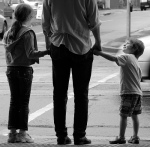
NOTEWORTHY WEDNESDAY!
I recently read an article about work-life integration…which is different from work-life balance.
Simply put, I found the discussion, integration of work-life, fascinating especially, the writer’s narrative of his conversation with an airport parking lot toll booth worker.
Every day when my children were small I felt the stress of trying to balance being a mother, wife, nurse and daughter.
There was a calendar stuck on my kitchen wall which said it all…appointments, school work, after school activities, dinners, business meetings, a true yearly diary tracking my daily doings.
Even when things were going smoothly…like no one was sick…or traveling it seemed overwhelming. But if anything was the least bit out of whack then my balancing act was way off. It was a true life tight-rope walk.
Twenty years later …things have changed…NOT really!
I am now a grandmother…
and am actively engaged in helping my daughter with her daughter.
In addition, I write…
I try to run a somewhat smooth household,
I try to take care of my aging self…
and I keep the same wall calendar
as when I was juggling a different three generational family constellation.
How do I view myself these days?
I would have to say, for the major part of my day…I am family focused …
my work as a social worker/nurse/writer fills in the down time that I make for myself which is either early in the morning, or at night.
My description of me???
“Juggler”…of work and life…
That is…somewhere between balanced and integrated.
Most days, I kind of like being a juggler.
With the wisdom that comes with age it is simply easier to prioritize…
I look at life holistically …
“juggling” my own needs, the needs of my family and the extraneous things as best I can.
What is your idea of work-life balance?
How we view ourselves plays a critical part in integrating work/life roles. Do you mostly identify yourself as work-focused, family-focused, some combination of those two–or something else altogether? Hint: don’t answer this one the way you think you should answer it; be honest with yourself..
So here are a few key takeaways. First, do not try to balance anything. Second, try to integrate instead, which requires some real awareness of your preferred behaviors, self-identity, and sense of control. You need to dedicate some time to figuring out those preferences. Finally, there’s no “right” way to create an integrated life. The possibilities of what success looks like are as endless as the potential plot lines in a parking lot booth operator’s novel.
via Strive For Work-Life Integration, Not Balance | Fast Company.
Related articles:
http://eof737.wordpress.com/2012/03/22/musings-creating-balance-in-life/


